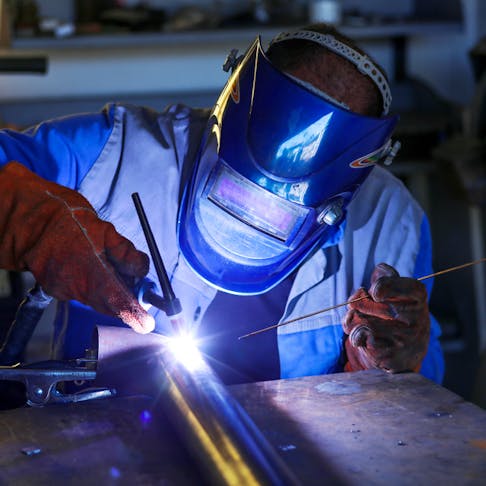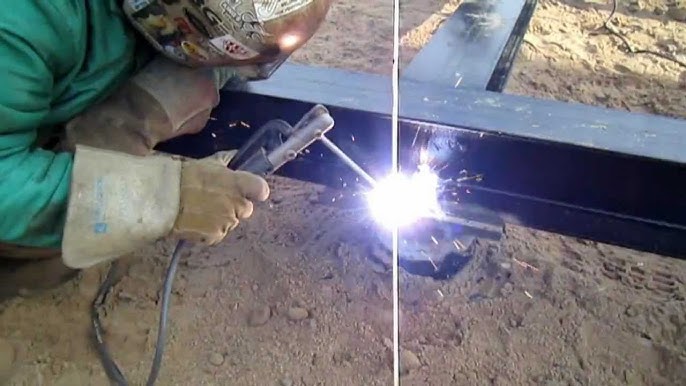Everything about Welding: Key Insights Into Techniques and Ideal Practices for Success
Welding includes a range of methods, each matched for certain materials and applications. Understanding these methods, such as GMAW, SMAW, and TIG, is crucial for attaining excellent outcomes. In addition, the best tools and safety and security techniques can not be ignored. As preparation and fixing play essential roles in the welding procedure, grasping these aspects can substantially enhance the quality of the end product. What are the key aspects that ensure an effective weld?
Understanding Various Welding Strategies
Welding methods incorporate a range of techniques, each fit to certain applications and materials. Amongst one of the most usual methods are Gas Metal Arc Welding (GMAW), Shielded Steel Arc Welding (SMAW), and Tungsten Inert Gas Welding (TIG) GMAW, also referred to as MIG welding, is preferred for its speed and convenience, making it suitable for slim materials. SMAW, or stick welding, is favored for its simplicity and performance in outdoor settings, particularly with thicker steels. TIG welding uses precision and control, making it ideal for elaborate job and non-ferrous metals (Belgrade Fabrication). Each strategy has its special benefits and factors to consider, allowing welders to select the very best method based on the task's needs, material type, and desired results. Recognizing these techniques is necessary for successful welding
Vital Welding Tools and Devices
While different welding techniques need specific skills, the best devices and devices are just as vital for attaining quality outcomes. Vital welding tools consists of welding equipments, which vary depending upon the technique-- such as MIG, TIG, or stick welding. Protective equipment, including aprons, helmets, and gloves, warranties safety and security and convenience throughout the procedure. Additionally, fixtures and clamps help secure products in location, ensuring accuracy in welds. Consumables like welding poles, cord, and protecting gas are also critical elements that influence the high quality of the weld. Tools such as cutters and mills promote surface prep work and post-weld ending up, adding to a specialist result. Spending in top quality equipment eventually improves the efficiency and efficiency of welding tasks.
Safety And Security Practices in Welding
Appropriate safety techniques are necessary in the welding industry to shield employees from potential dangers. Welders must put on suitable personal safety devices (PPE), including safety helmets with proper shading, handwear covers, and flame-resistant garments. Adequate ventilation is crucial to lower direct exposure to harmful fumes and gases created during the welding procedure. Furthermore, employees ought to be learnt the correct handling of welding equipment to protect against mishaps. Fire safety steps, such as maintaining flammable materials far from the welding area and having fire extinguishers easily offered, are necessary. Normal evaluations of devices and workspaces can assist determine possible dangers prior to they cause mishaps. By adhering to these safety methods, welders can produce a much safer working environment and reduce dangers related to their profession.
Readying Materials for Welding
Preparing materials for welding is an essential action that considerably influences the high quality and integrity of the final item (Belgrade Fabrication). Correct preparation entails cleaning up the surfaces to get rid of contaminants such as rust, dust, and oil, which can endanger the weld. Strategies such as grinding, sanding, or using solvents are frequently used to attain a clean surface area. Furthermore, making certain that the products mesh comfortably is vital; gaps can bring about weak welds. It's also essential to think about the alignment and positioning of the components, as this will affect the convenience of welding and view publisher site the last end result. Lastly, selecting the proper filler product and guaranteeing compatibility with the base metals is important for attaining solid, long lasting welds
Tips for Achieving High-Quality Welds
Attaining high-grade welds calls for attention to detail and adherence to finest methods throughout the welding procedure. Proper joint prep work is necessary, ensuring surface areas are clean and free from contaminants. Picking the appropriate filler product and welding strategy based on the base steels is essential for perfect bonding. Maintaining regular travel speed and angle while welding can promote and avoid issues harmony. In addition, managing warm input is necessary; too much warm can lead to bending and compromised joints. On a regular basis checking the welds throughout the procedure permits for immediate modifications if required. Using appropriate post-weld treatments, such as cleansing and tension relief, can enhance the sturdiness and integrity of the weld, ultimately guaranteeing an effective result.
Troubleshooting Typical Welding Issues
Welding typically presents challenges that can affect the high quality and honesty of the end product. Common concerns such as porosity, inconsistent weld beads, and getting too hot can emerge, each needing certain troubleshooting strategies. Understanding these troubles is important for welders to enhance their abilities and attain ideal outcomes.
Porosity Troubles Clarified
Although porosity can commonly be overlooked, it remains a critical issue in welding that can jeopardize the integrity of an ended up product. Porosity refers to the existence of small gas pockets within the weld grain, which can weaken the joint and lead to early failing. This issue commonly develops from impurities, moisture, or inappropriate shielding gas insurance coverage throughout the welding process. To minimize porosity, welders should verify that the base products are tidy and dry, utilize proper protecting gases, and keep constant welding criteria. Consistently evaluating the tools and environment can also assist determine possible concerns prior to they materialize in the weld. Dealing with porosity properly is important for accomplishing solid, durable welds that meet top quality requirements.

Inconsistent Weld Beans
Inconsistent weld beads can considerably influence the high quality and strength of a finished product. Numerous elements contribute to this issue, consisting of inappropriate travel rate, inaccurate amperage settings, and irregular electrode angles. When the welder relocates too quickly, a grain may show up narrow and lack penetration, while relocating too gradually can create too much build-up. Additionally, making use of the wrong amperage can result in either damaging or excessive spatter, both of which concession weld integrity. The welder's strategy, such as irregular lantern motion, can additionally bring about unequal grain appearance. To minimize these issues, welders should focus on keeping stable, regulated movements and making certain proper tools settings to accomplish uniformity in their welds. Consistency is vital to accomplishing solid and trustworthy welds.
Overheating and Warping Issues
Too much heat during the welding process can result in significant getting too hot and deforming problems, affecting the architectural honesty of the workpiece. These problems often manifest as distortion, which can jeopardize alignment and fit-up, making additional assembly challenging. Aspects contributing to overheating include the option of welding parameters, such as voltage and travel rate, along with the sort of Extra resources product being welded. To alleviate these YOURURL.com concerns, welders ought to preserve constant travel speed and proper warmth input while keeping an eye on the work surface temperature. Additionally, preheating or post-weld warm treatment can assist relieve stresses brought on by rapid cooling - Belgrade Fabrication. Normal examination and adherence to ideal methods are necessary in protecting against getting too hot and guaranteeing the durability and reliability of welded structures
Frequently Asked Concerns
What Are the Profession Opportunities in the Welding Industry?
The welding industry supplies varied occupation chances, including positions as welders, educators, assessors, and engineers. Specialists can function in production, building and construction, aerospace, and auto markets, benefiting from strong demand and affordable salaries in numerous functions.
How Can I Boost My Welding Speed Without Sacrificing Top Quality?
To improve welding rate without sacrificing high quality, one ought to exercise efficient strategies, preserve tools, optimize setups, and improve hand-eye coordination. Routine training and looking for feedback can also greatly add to achieving quicker, high-grade welds.
What Qualifications Are Available for Welders?
Countless certifications exist for welders, consisting of those from the American Welding Society (AWS), the National Center for Building And Construction Education and Research (NCCER), and different industry-specific organizations. These credentials enhance employability and show ability efficiency.
How Does Welding Affect the Qualities of Metals?
Welding influences the homes of steels by altering their microstructure, which can lead to modifications in firmness, strength, and ductility. Heat input and air conditioning rates during the process substantially affect these material attributes.
Can I Bonded Dissimilar Metals Together?

Comments on “Field guide for weld distortion by Belgrade Fabrication”